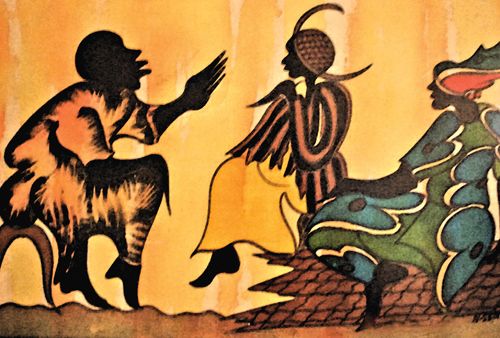BLACK CULTURE AND TRADITION: Visible and Invisible helps students better understand the bedrock beliefs of black culture in America. Students read valuable and foundational theory through carefully selected articles, critically analyze famous and lesser-known forms of black culture, and learn how appropriation and performance have rendered certain aspects of black culture invisible. The text underscores how the omission of relevant teachings about African Americans continues the injustices and racial inequality experienced in America.
The anthology features four distinct parts. In Part1, selected articles by Molefe Asante, Melville Herskovits, and Amos Wilson discuss Afrocentrism, culture, and psychological theories and shed light on many of the misnomers, misconceptions, and misunderstandings in Black Culture and Tradition. Part II focuses on the values that are Part of African Americans’ everyday lives and experiences, including religious beliefs, ideas of right and wrong, spending practices, and class ideology. In Part III, students read about black cultural traditions, emphasizing the family. The final Part discusses beauty, black creativity, and the expression of values, beliefs, and traditions as aesthetics of black culture.
5 THINGS TO KNOW ABOUT BLACK CULTURE AND TRADITION
1. A DIFFERENCE BETWEEN BLACK CULTURE AND “BLACK CULTURE.”
Black culture, sans quotes, is the total of cultural contributions to the mainstream by the black subculture. It’s a fluid and multifaceted, often contradictory thing.
Meanwhile, “Black Culture” is a lifestyle standard made of assumptions about black identity, often used successfully by marketers, studio heads, fashion brands, and music labels to make money.
2. “BLACK CULTURE” OFTEN EMPLOYS, BUT IS NOT ALWAYS DEFINED BY, ACTUAL BLACK PEOPLE
Often by the time “Black Culture” is being used to sell a product or idea, it’s already been reinterpreted by white people.
This isn’t necessarily malicious, but it’s something to note. We are often told what being black is by people who aren’t. Up and coming black hip-hop artists are moulded to appeal to the masses by white label executives. Television shows with black characters might have no black writers or directors.
I’m reminded of a time in college when a white roommate insisted he was “blacker” than I was by showing me he could successfully “crip walk.” It was a feat I could not do nor cared to match.
3. BLACK CULTURE IS MULTICULTURAL
Black culture draws from various influences born both in and outside black communities.
Janelle Monae’s album “Electric Lady” demonstrates this: It is a brilliant amalgamation of artistic references as disparate as Motown and Fritz Lang’s Metropolis.
Being black in America involves moving through and adopting from many different cultures. Therefore, to define what’s authentically black is virtually impossible, as there are as many ways to be black as there are black people.
4. BLACK CULTURE IS NOT PROPRIETARY TO BLACK PEOPLE
Many observers had a tough time when rapper Macklemore & Ryan Lewis won the Grammy for best rap album over Kendrick Lamar.
There is similar discontent over the lack of black African American Music Artists recognized or rotated on the radio in categories once “owned” by black musicians, like R&B or hip hop.
But this is not new. Once communities of black artists birth something to the mass culture, it is no longer ours in many ways. For every Dizzy Gillespie, there is a Dave Brubeck.
5. BLACK CULTURE IS A STARTING POINT
Culture of any kind can be grounding and comforting, creating a home for nourishment and rules for understanding ourselves. When I began trying to get my film made, the confines of “African Culture and Traditions” seemed to suggest that if a black movie weren’t broadly comedic, a historical epic tragedy, or a street story, there would be no audience for it.



















